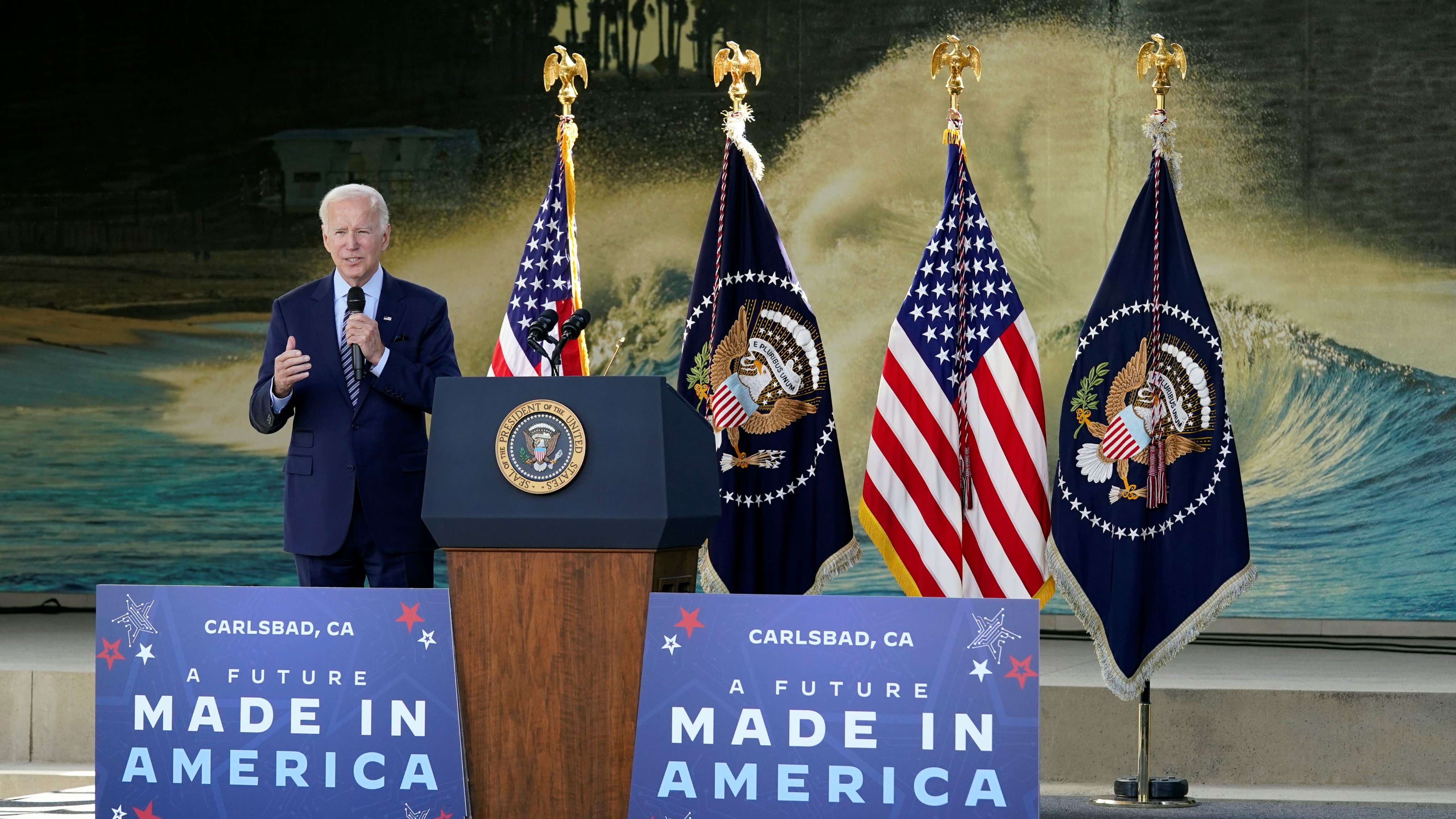Opportunities For Growth: Canada And Mexico's Trade Future Amid US Protectionism

Table of Contents
Strengthening the Canada-Mexico Trade Relationship
The relationship between Canada and Mexico has been significantly shaped by their shared history within NAFTA and now the USMCA. Navigating the complexities of this trilateral agreement is crucial for understanding the future of bilateral Canada-Mexico trade.
USMCA as a Foundation
The United States-Mexico-Canada Agreement (USMCA) provides a crucial framework for continued economic cooperation. While it replaced NAFTA, it also presents both benefits and challenges for Canada and Mexico.
- Enhanced market access for specific goods and services: The USMCA offers preferential access to each other's markets, reducing tariffs and non-tariff barriers on a wide range of products. This is particularly beneficial for sectors like automotive manufacturing and agriculture.
- Dispute resolution mechanisms within the USMCA framework: The agreement includes robust dispute settlement mechanisms to address trade disagreements between the three countries, ensuring a level playing field for businesses.
- Opportunities for regulatory harmonization: Increased collaboration on regulatory matters can simplify cross-border trade and reduce compliance costs for businesses operating in both countries. This includes areas like environmental regulations and labor standards.
- Challenges in navigating differing interpretations of USMCA clauses: Despite the clear framework, differences in interpretation of certain clauses can arise, potentially leading to trade disputes. Effective communication and collaboration are vital to avoid such issues.
Diversification of Trade Partners
Reducing over-reliance on the US market is crucial for long-term stability. This requires proactive measures to expand trade relationships with other nations.
- Exploring opportunities within the Asia-Pacific region: Both Canada and Mexico can tap into the burgeoning markets of Asia, leveraging their existing free trade agreements and seeking new ones. This includes exploring opportunities in areas like technology, renewable energy, and agricultural products.
- Strengthening trade ties with Latin American nations: Increased regional integration within Latin America can create new avenues for trade and investment for both Canada and Mexico.
- Leveraging existing free trade agreements to access new markets: Both countries are signatories to various free trade agreements, providing access to diverse markets worldwide. Maximizing these existing agreements is key to diversification.
- Investing in infrastructure to support diversified trade routes: Upgrading transportation networks, ports, and other infrastructure is essential for facilitating trade with new partners effectively.
Capitalizing on Complementary Strengths
Canada and Mexico possess distinct yet complementary economic strengths. By strategically aligning their capabilities, they can mitigate risks and enhance their competitiveness in the global market.
Leveraging Manufacturing and Supply Chains
Both countries boast significant manufacturing sectors, but with different specializations. Joint ventures and integrated supply chains can create a resilient and efficient production ecosystem.
- Identifying areas of synergistic manufacturing capabilities: This includes areas like automotive parts, aerospace components, and advanced manufacturing technologies.
- Investing in advanced manufacturing technologies: Automation, robotics, and AI can boost productivity and efficiency, creating a more competitive advantage.
- Fostering cross-border collaboration in research and development: Joint R&D initiatives can lead to the development of innovative products and technologies, enhancing competitiveness.
- Streamlining customs procedures to expedite cross-border shipments: Reducing bureaucratic hurdles and enhancing cross-border logistics is vital for efficient supply chain management.
Harnessing Technological Innovation
Investment in technology and digital infrastructure is crucial for driving growth and creating new export opportunities within Canada-Mexico trade.
- Collaboration on digital trade initiatives: Harmonizing regulations and standards for digital trade can facilitate e-commerce and cross-border data flows.
- Investing in R&D in emerging technologies like AI and renewable energy: These sectors are poised for significant growth, and joint investments can accelerate innovation and create new export opportunities.
- Developing digital infrastructure to support e-commerce: Expanding broadband access and improving digital infrastructure are vital for facilitating online trade.
- Promoting skills development and training in emerging technology sectors: Investing in education and training is crucial for creating a skilled workforce capable of meeting the demands of the digital economy.
Addressing Challenges and Mitigating Risks
While opportunities abound, challenges remain. Proactive risk management is essential for ensuring the long-term success of Canada-Mexico trade.
Navigating US Trade Policies
The fluctuating nature of US trade policies requires careful monitoring and strategic adaptation.
- Monitoring US trade policy developments closely: Staying informed about potential changes and their implications is crucial for proactive mitigation.
- Developing contingency plans to mitigate potential disruptions: Having alternative strategies in place can help to minimize the impact of unexpected trade policy changes.
- Engaging in dialogue with US policymakers to address concerns: Open communication and collaboration can help to resolve trade disputes and foster a more stable trading relationship.
- Utilizing dispute resolution mechanisms under existing agreements: Leveraging the mechanisms within the USMCA and other trade agreements can provide a framework for addressing disagreements.
Investment in Infrastructure and Logistics
Efficient infrastructure is fundamental to seamless trade flows between Canada and Mexico.
- Investing in border crossings and transportation networks: Modernizing border infrastructure and improving transportation networks can significantly reduce delays and costs.
- Modernizing customs procedures to reduce delays and costs: Streamlining customs processes can reduce bureaucratic hurdles and expedite cross-border shipments.
- Improving logistics and supply chain management: Investing in advanced logistics technologies and strategies can optimize supply chain efficiency.
- Developing sustainable infrastructure to reduce environmental impact: Investing in environmentally friendly infrastructure can contribute to sustainable economic growth.
Conclusion
Despite the challenges posed by US protectionism, Canada and Mexico possess significant opportunities for growth in their bilateral trade relationship. By strengthening the USMCA framework, diversifying trade partnerships, capitalizing on complementary strengths, and proactively addressing challenges, both nations can navigate this evolving geopolitical landscape and achieve sustained economic prosperity. The future of Canada-Mexico trade hinges on strategic collaboration and a commitment to innovation. Seize the opportunities and explore the potential of Canada-Mexico trade today.

Featured Posts
-
 Ecole Maternelle De Saint Ouen Transfert Envisage Face Aux Problemes De Trafic De Drogue
May 27, 2025
Ecole Maternelle De Saint Ouen Transfert Envisage Face Aux Problemes De Trafic De Drogue
May 27, 2025 -
 5 Can T Miss Movies And Tv Shows On Streaming Services
May 27, 2025
5 Can T Miss Movies And Tv Shows On Streaming Services
May 27, 2025 -
 Sesame Street Szas New Song Promotes Gratitude
May 27, 2025
Sesame Street Szas New Song Promotes Gratitude
May 27, 2025 -
 Ligue 1 Algerienne Revivez La Victoire De Laso Chlef Contre L Usma
May 27, 2025
Ligue 1 Algerienne Revivez La Victoire De Laso Chlef Contre L Usma
May 27, 2025 -
 Altsjyl Fy Msabqt Bryd Aljzayr 2025 Kl Ma Thtaj Merfth
May 27, 2025
Altsjyl Fy Msabqt Bryd Aljzayr 2025 Kl Ma Thtaj Merfth
May 27, 2025
Latest Posts
-
 From Father To Runway Vivian Musks Modeling Debut And Family Dynamics
May 30, 2025
From Father To Runway Vivian Musks Modeling Debut And Family Dynamics
May 30, 2025 -
 Elon Musks Daughters Modeling Career A Public Departure
May 30, 2025
Elon Musks Daughters Modeling Career A Public Departure
May 30, 2025 -
 Child Poverty And Technological Advancement The Elon Musk Factor
May 30, 2025
Child Poverty And Technological Advancement The Elon Musk Factor
May 30, 2025 -
 Vivian Jenna Wilsons Modeling Debut A Look At Elon Musks Daughter
May 30, 2025
Vivian Jenna Wilsons Modeling Debut A Look At Elon Musks Daughter
May 30, 2025 -
 Elon Musks Daughter Vivian Modeling Debut Sparks Discussion
May 30, 2025
Elon Musks Daughter Vivian Modeling Debut Sparks Discussion
May 30, 2025
